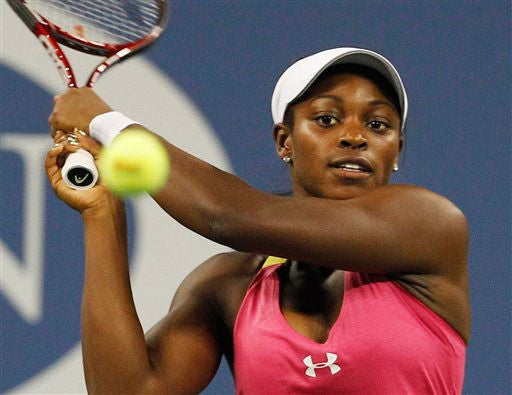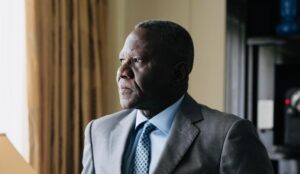
Tennis is a sport that requires not only skill and strategy but also the ability to adapt to different environments. One of the most significant factors influencing tennis matches is the court surface.
Tennis is typically played on three primary types of surfaces: clay, grass, and hard courts. Each of these surfaces has unique characteristics that affect the way the ball moves, the style of play, and even the physical demands on players. Understanding these differences is crucial for players at all levels, whether they are professionals or amateurs.
In various African countries, tennis has gained popularity, and tournaments are held on diverse court surfaces. Players from Nairobi, Johannesburg, Accra, and Casablanca have learned to adapt their techniques depending on whether they are playing on clay, grass, or hard courts. Let’s explore how these surfaces influence the game and how African players like Ayo, Zainab, and Tshidi navigate them in different regions.
Clay Courts: A Game of Patience and Endurance
Clay courts are commonly found in regions with a warmer climate, such as Morocco and South Africa. In Casablanca, Ayo, a rising tennis star, trains on clay courts almost daily. Clay is a surface made from crushed brick or shale, giving it a soft, loose texture. One of the defining characteristics of clay courts is their slow pace. When the ball hits the clay, it digs into the surface and slows down significantly. This forces players to engage in longer rallies, testing their endurance and patience.
For Ayo, playing on clay requires a change in strategy. “On clay, I can’t rely on fast serves to win points quickly,” he explains. “It’s more about constructing points carefully and being patient.” Clay courts also favor players who excel in defensive play. Ayo’s ability to slide on the clay to reach difficult shots has helped him win several local tournaments.
Zainab, a top female player from Accra, shares a similar experience. She plays regularly on the clay courts in her city, and she emphasizes how the surface influences movement. “You need to master sliding and positioning on clay. It’s not just about speed, but also about timing your shots,” she says. Zainab’s coach always reminds her to stay focused during long rallies, as matches on clay can be mentally and physically exhausting.
The slow nature of clay courts also gives players more time to react to their opponent’s shots, making it easier to retrieve difficult balls. However, the downside is that it requires more effort to generate power, which can be tiring over long matches. Clay courts are less forgiving on players’ bodies, often leading to longer match durations and more wear on the legs. Players like Ayo and Zainab rely on stamina, consistency, and strategic thinking to succeed on this surface.
Grass Courts: Speed and Precision
While clay courts demand patience, grass courts, often found in regions with more moderate climates like Cape Town or Harare, require quick reflexes and precision. Tshidi, a skilled tennis player from Johannesburg, enjoys playing on the grass courts available in a few exclusive clubs. Grass courts are made from natural grass, similar to a golf course, and are known for their fast-paced nature. When the ball hits the grass, it stays low and skids, making it challenging for players to react quickly.
Tshidi’s game revolves around a strong serve and volley style, which is well-suited for grass courts. “On grass, I can use my powerful serves to gain an immediate advantage. The ball moves fast and stays low, so my opponents have less time to react,” Tshidi explains. The fast pace of grass courts tends to benefit players who prefer attacking play, as they can rush to the net and finish points quickly.
However, grass courts come with their own set of challenges. The uneven nature of the surface can cause the ball to bounce unpredictably. Tshidi has had to adapt by staying alert and flexible during matches. “You can’t always predict how the ball will bounce on grass, so you have to be ready for anything,” he says.
In Nairobi, a local tennis club features a few grass courts, where players like Nia enjoy the unique feel of the surface. “Grass courts are a different game altogether,” Nia says. “It’s about fast thinking and agility. You don’t have the luxury of time like on clay, so you need to make decisions quickly.”
Players who perform well on grass often have a strong serve, good footwork, and the ability to execute volleys effectively. The soft nature of the grass makes it easier on the joints, which can be a relief after playing on harder surfaces. However, maintaining grass courts is expensive and time-consuming, so they are less common across Africa compared to clay and hard courts.
Hard Courts: A Balance Between Speed and Control
Hard courts are perhaps the most common type of tennis surface found in African cities like Lagos, Cairo, and Kigali. These courts are made of asphalt or concrete, often coated with an acrylic surface, providing a consistent bounce and a medium pace. Hard courts strike a balance between the slow, strategic nature of clay courts and the fast, aggressive style of grass courts.
In Lagos, Kofi is an ambitious young player who regularly practices on hard courts at a local sports complex. “I like hard courts because they give me the best of both worlds,” Kofi says. “I can play fast when I need to, but I also have enough control to engage in longer rallies if necessary.” Hard courts offer a more predictable bounce, which benefits players who rely on precision and consistency.
The hard surface, however, can be tough on the body, particularly the knees and ankles. Matches on hard courts can be physically demanding, especially when played in the intense heat of places like Cairo or Dakar. Kofi has learned the importance of proper footwear and conditioning to avoid injuries. “Playing on hard courts requires you to be in top physical shape,” he notes. “It’s a tough surface, but it allows me to use all aspects of my game.”
In Kigali, tennis players like Amara appreciate the versatility of hard courts. “It’s a fair surface that doesn’t favor any particular style,” Amara explains. “You can be a baseline player, an all-court player, or even a serve-and-volley player, and still find success on hard courts.”
Adapting to Different Surfaces
For African players like Ayo, Zainab, Tshidi, Kofi, and Amara, adapting to different court surfaces is an essential part of their development as athletes. Each surface demands a unique approach to the game, whether it’s the patience and endurance required for clay, the speed and precision needed for grass, or the balance of power and control found on hard courts. Mastering these surfaces allows players to compete at higher levels, both locally and internationally.
In regions where resources may be limited, African players often have fewer opportunities to train on all three surfaces. However, as the sport continues to grow in popularity, tennis academies and clubs across Africa are investing in diverse court surfaces to help players develop a well-rounded game. The ability to adapt to different surfaces is not just a technical skill—it also reflects the mental toughness and resilience of players who dream of representing Africa on the world stage.
By understanding how each surface affects play, players from diverse backgrounds can improve their game and excel in various conditions, ensuring that tennis continues to thrive across the continent.
Have a press release, feature, article for publication? Send it to us via Whatsapp on +233543452542








